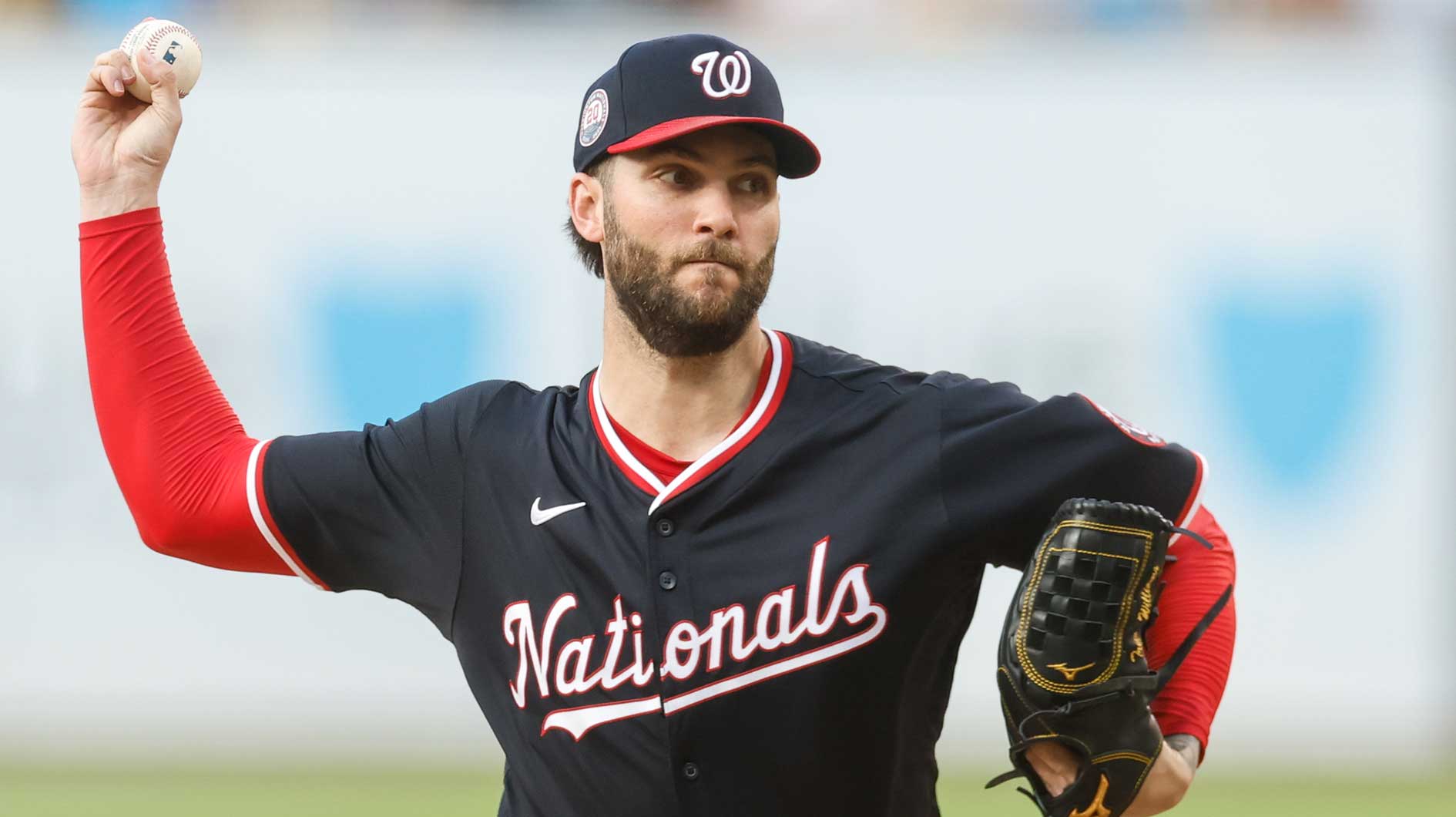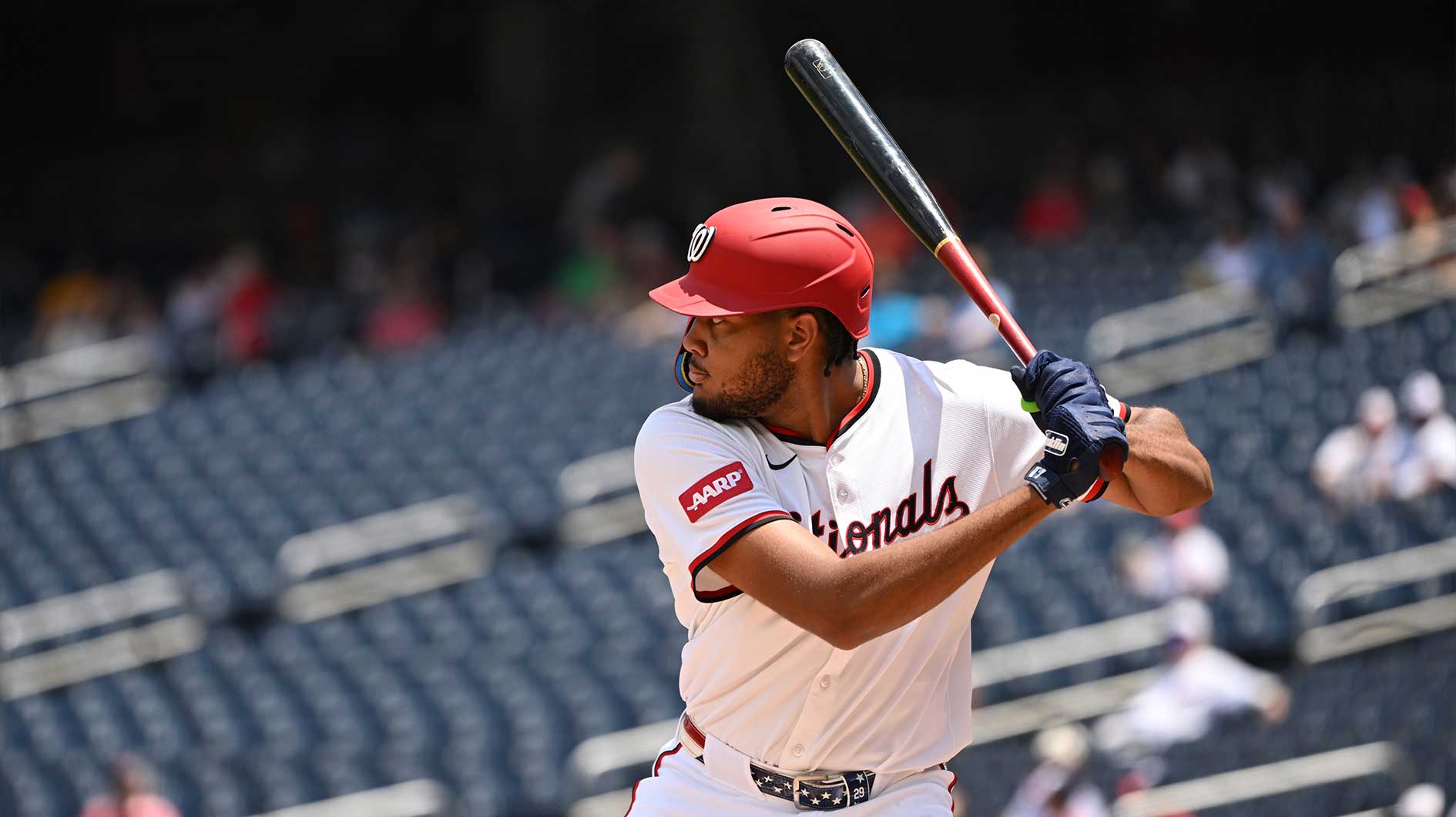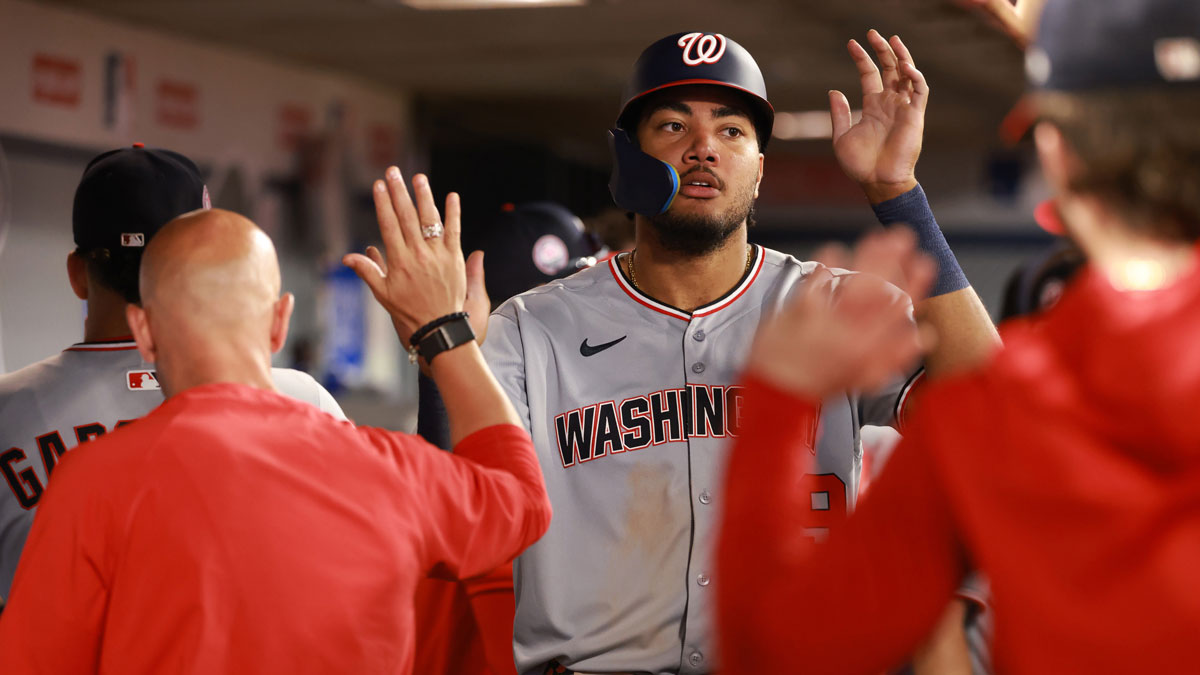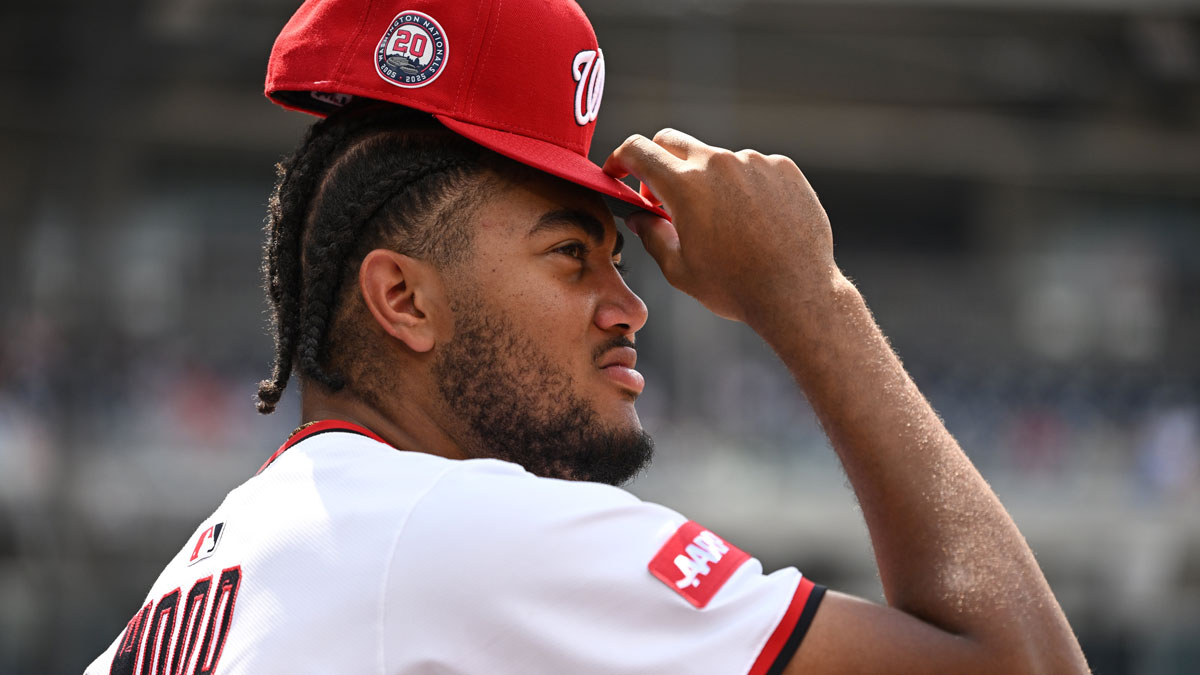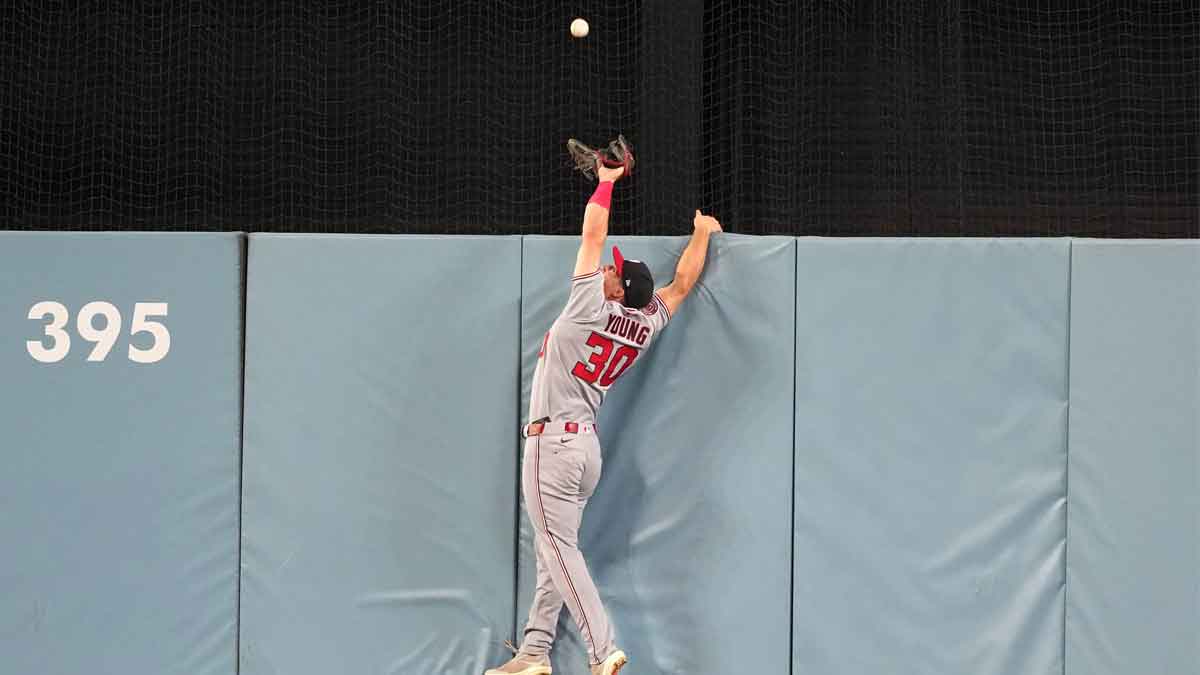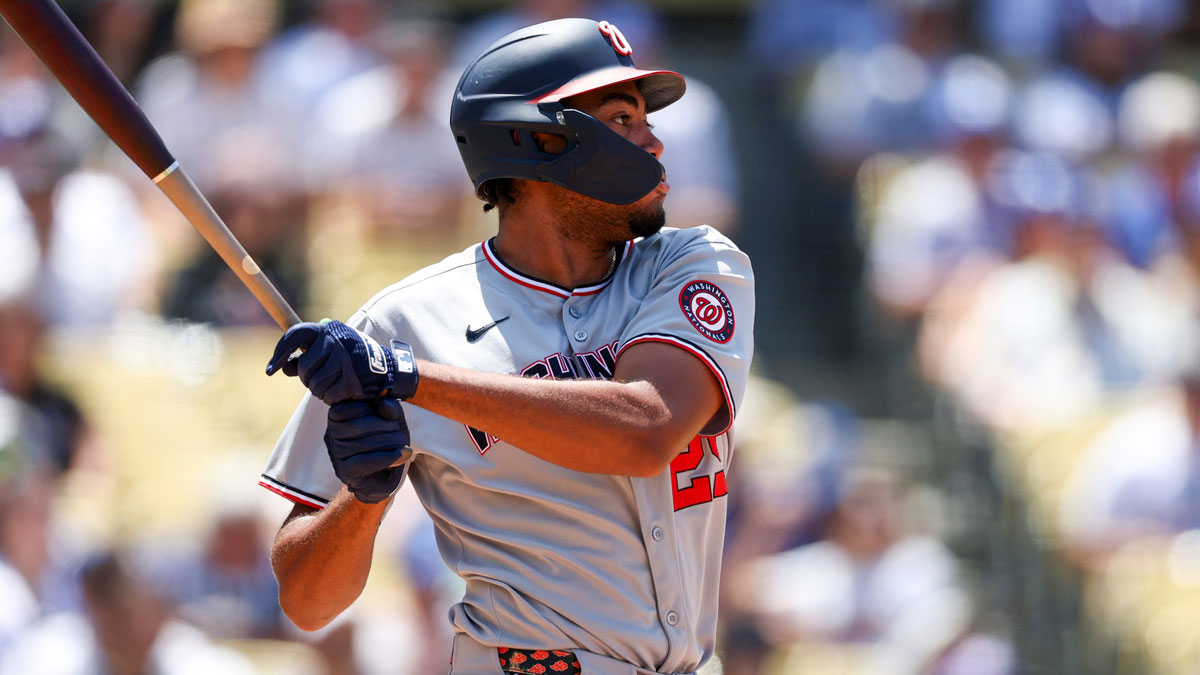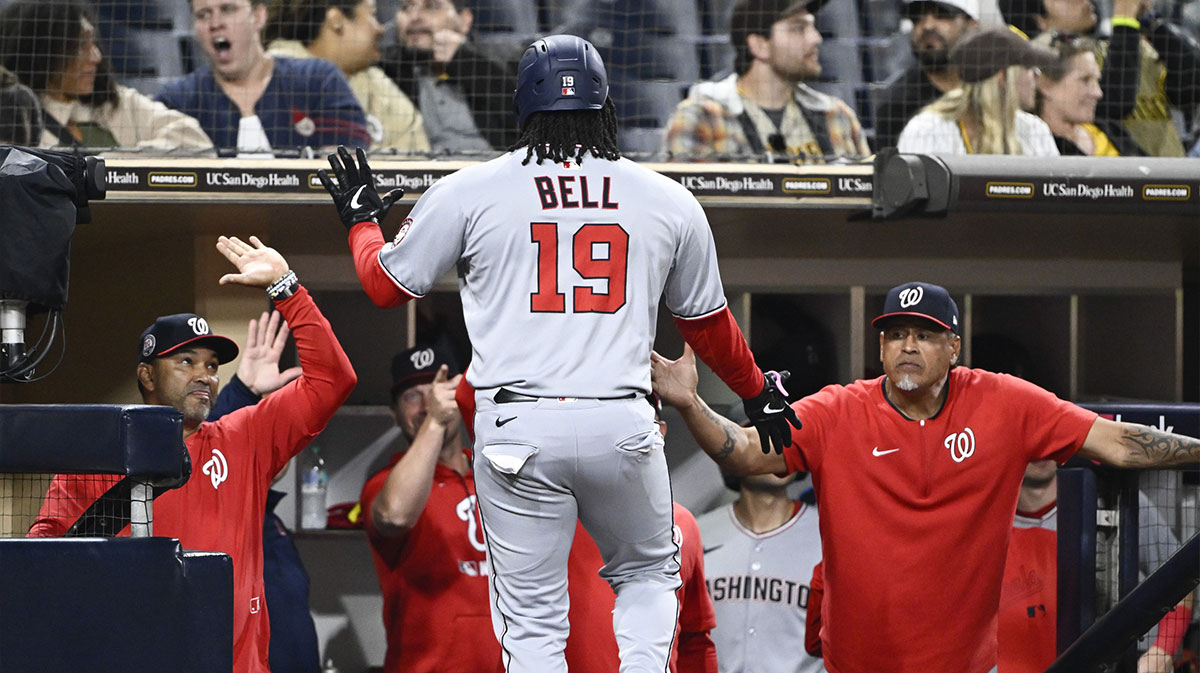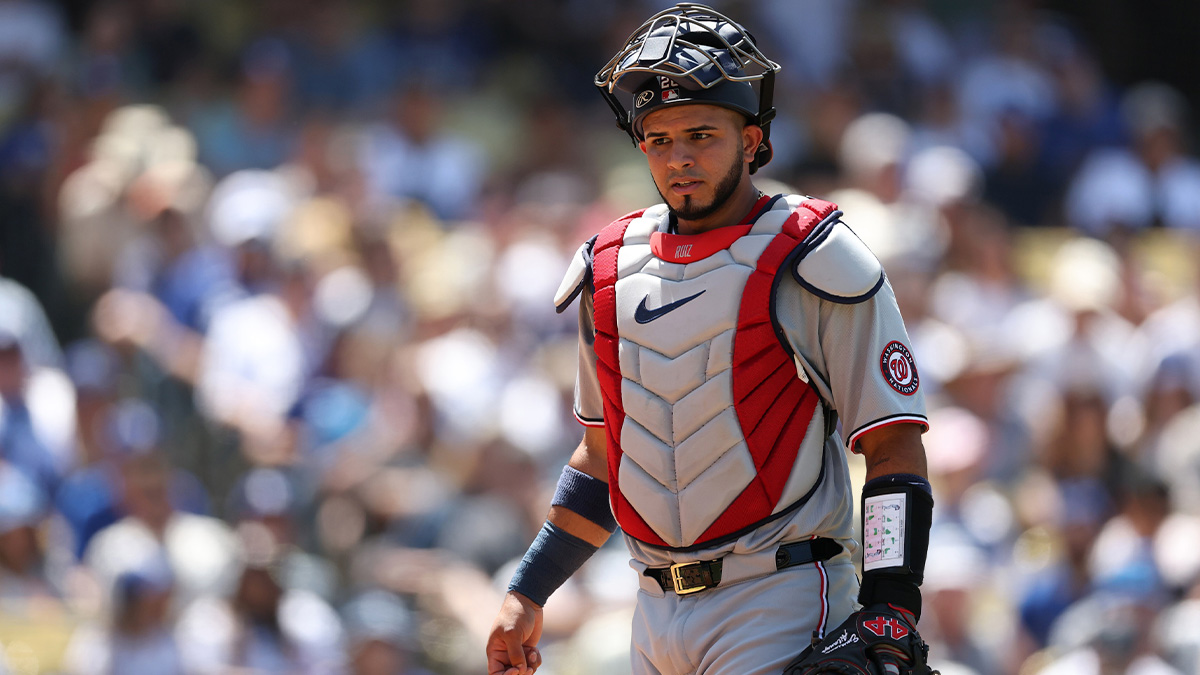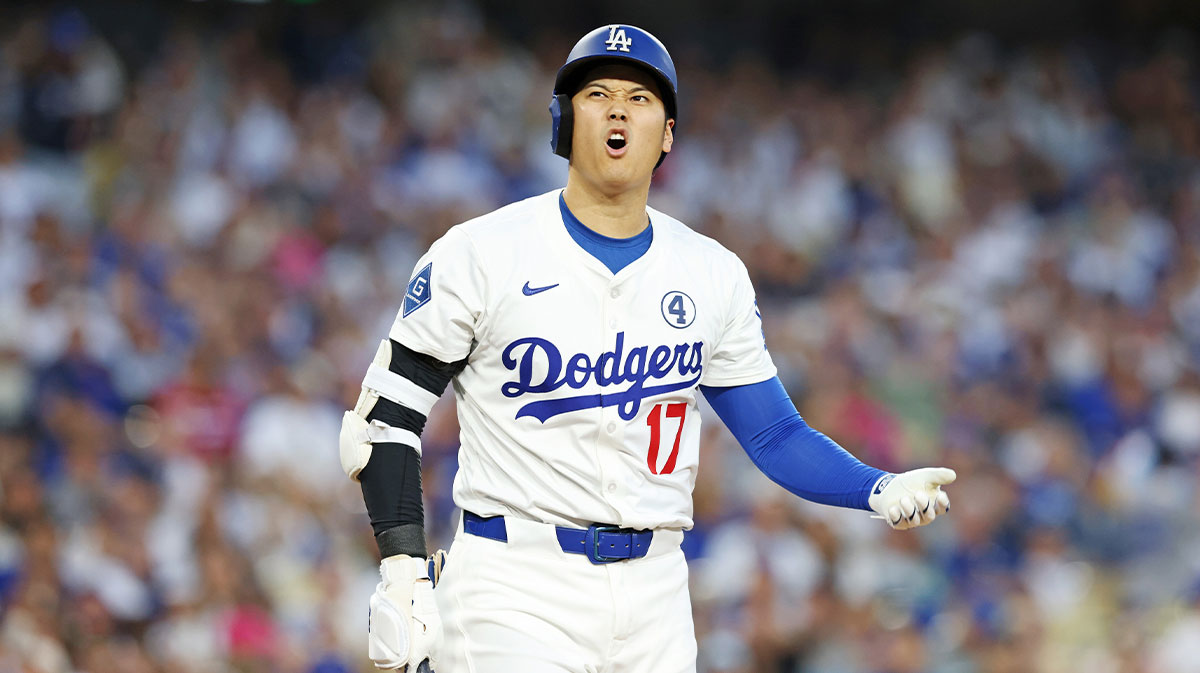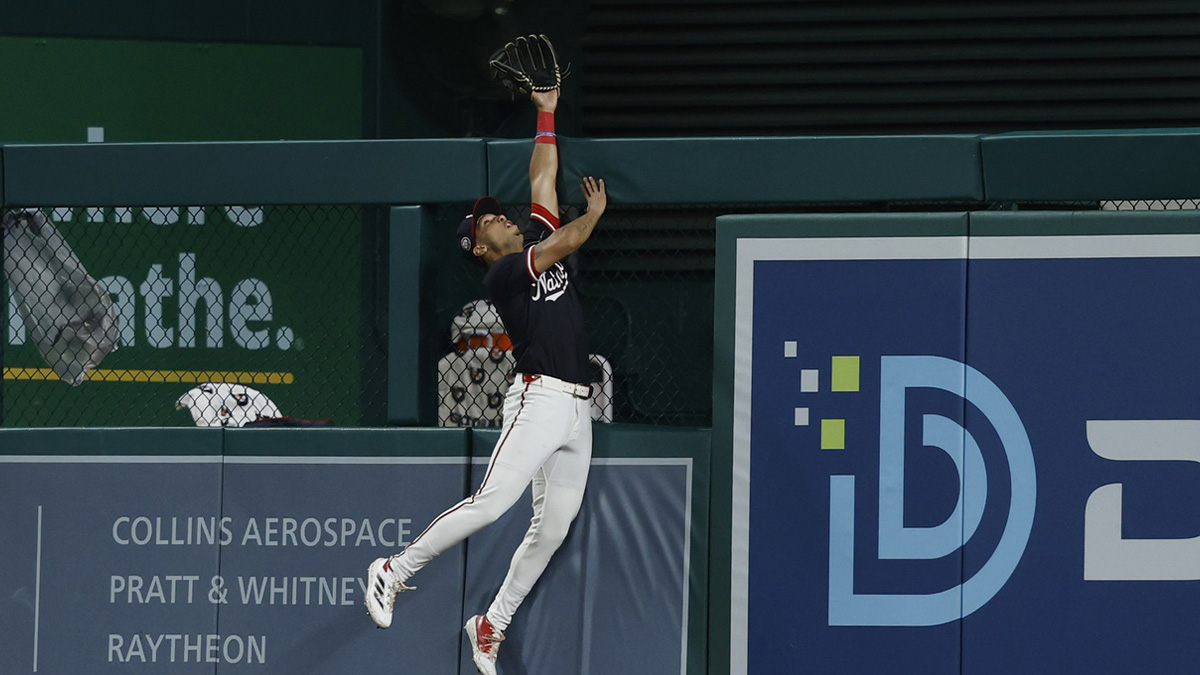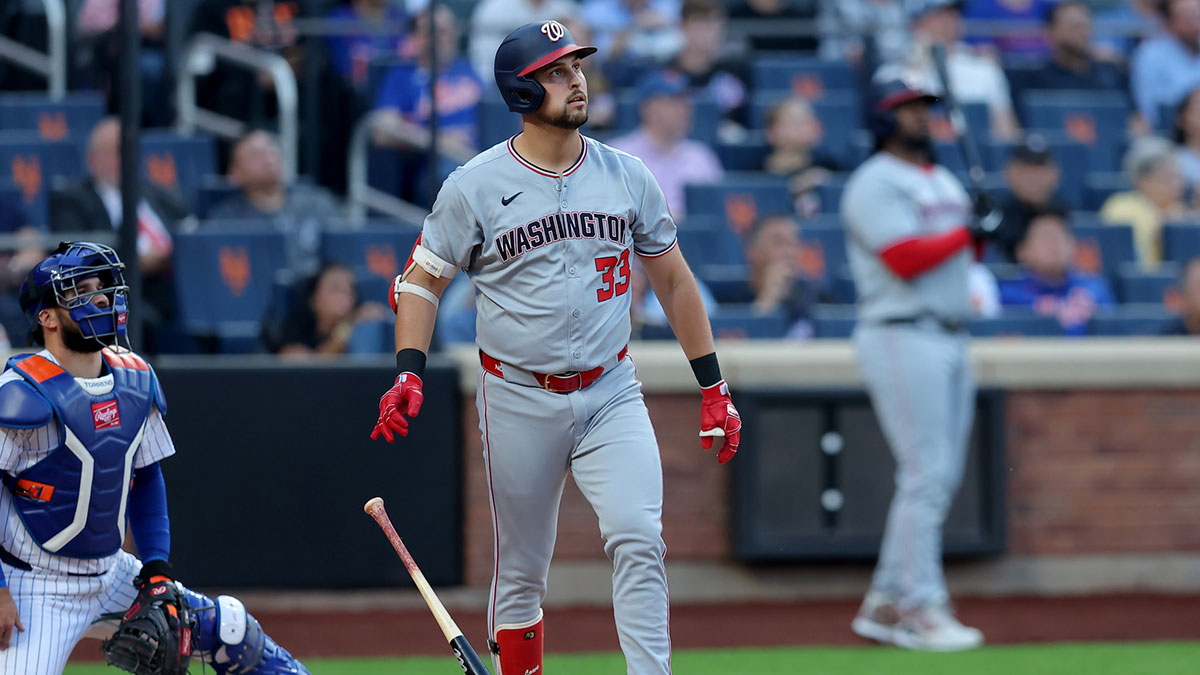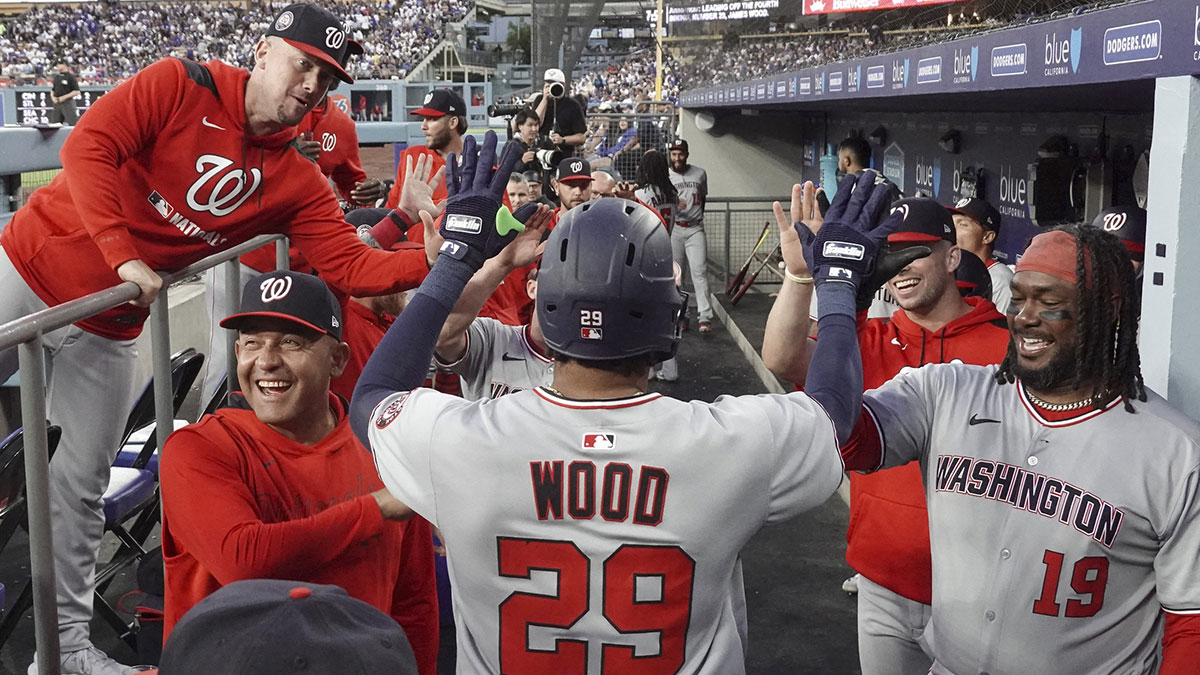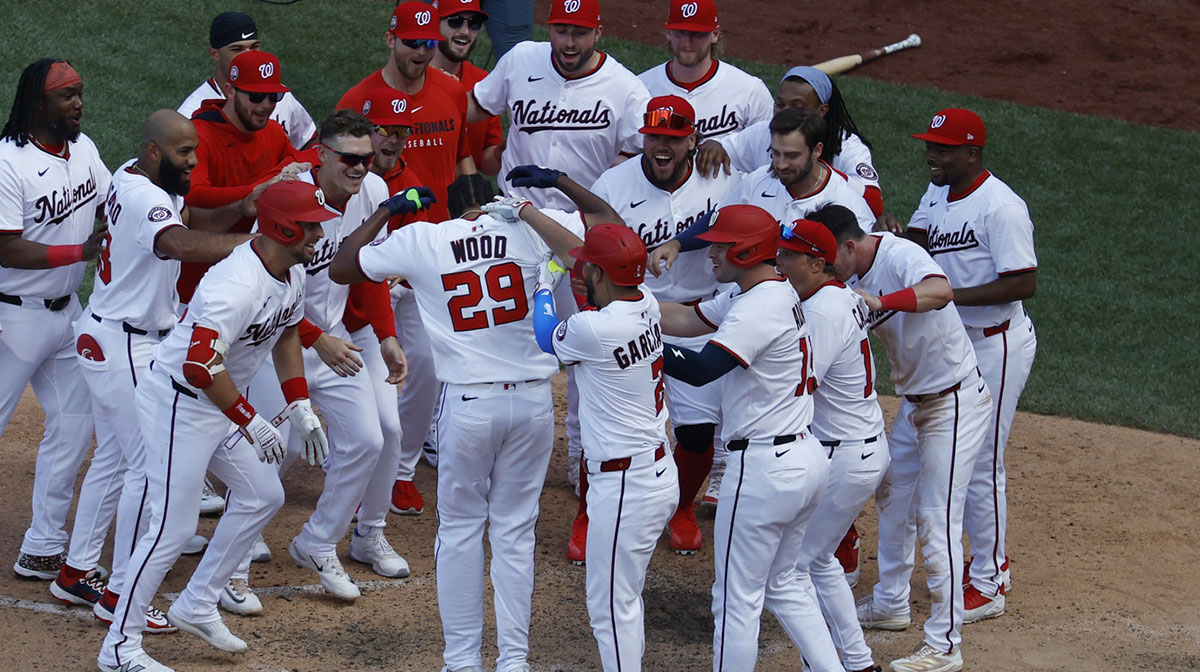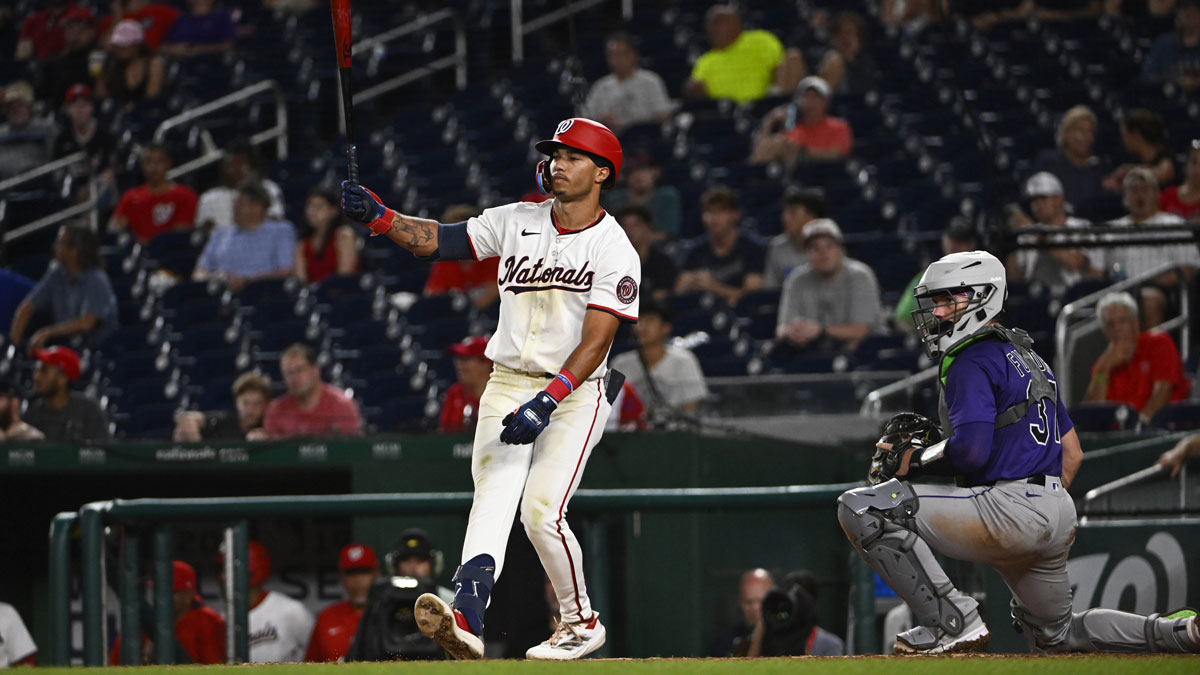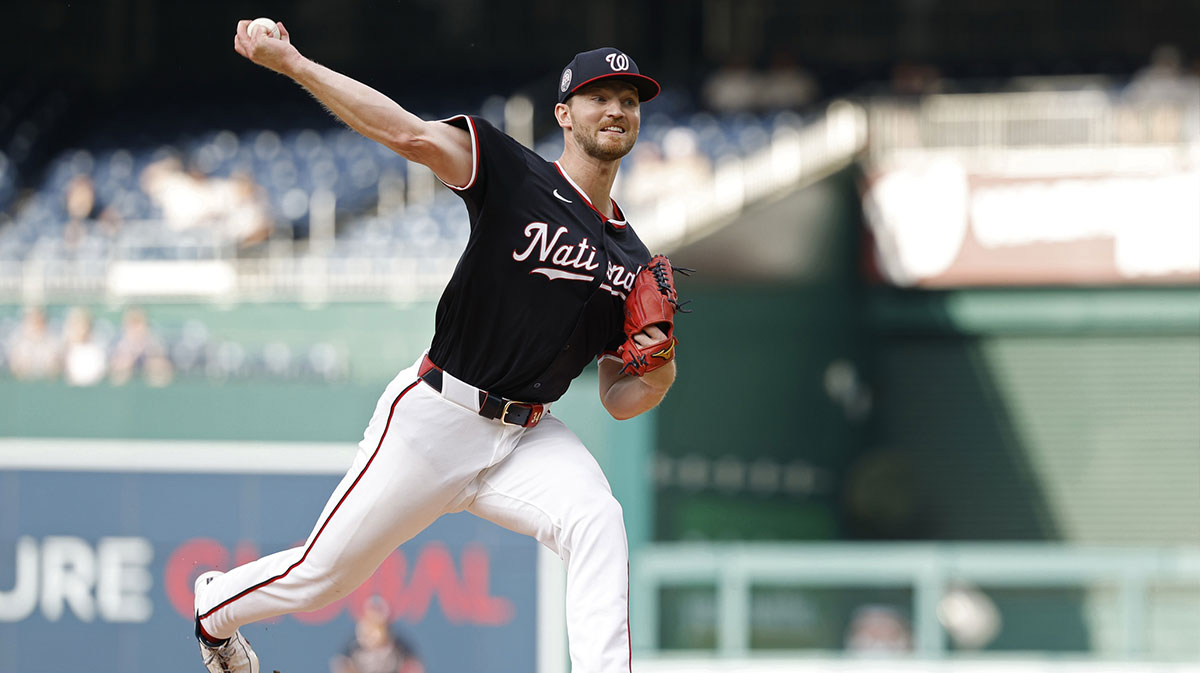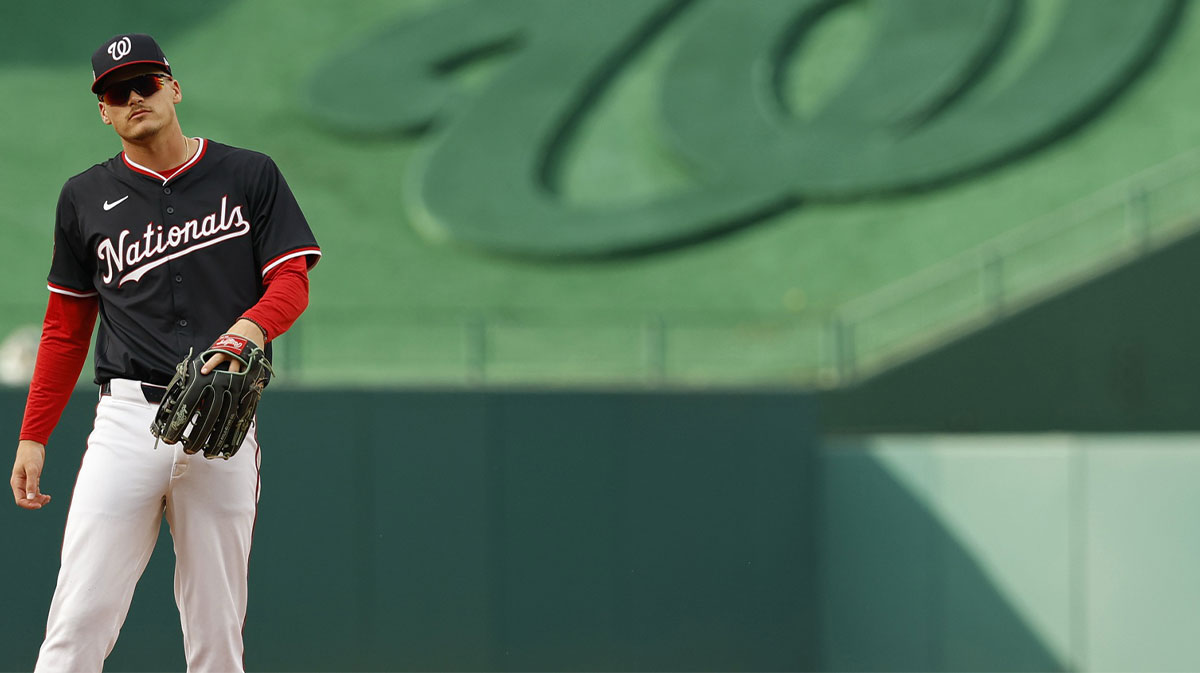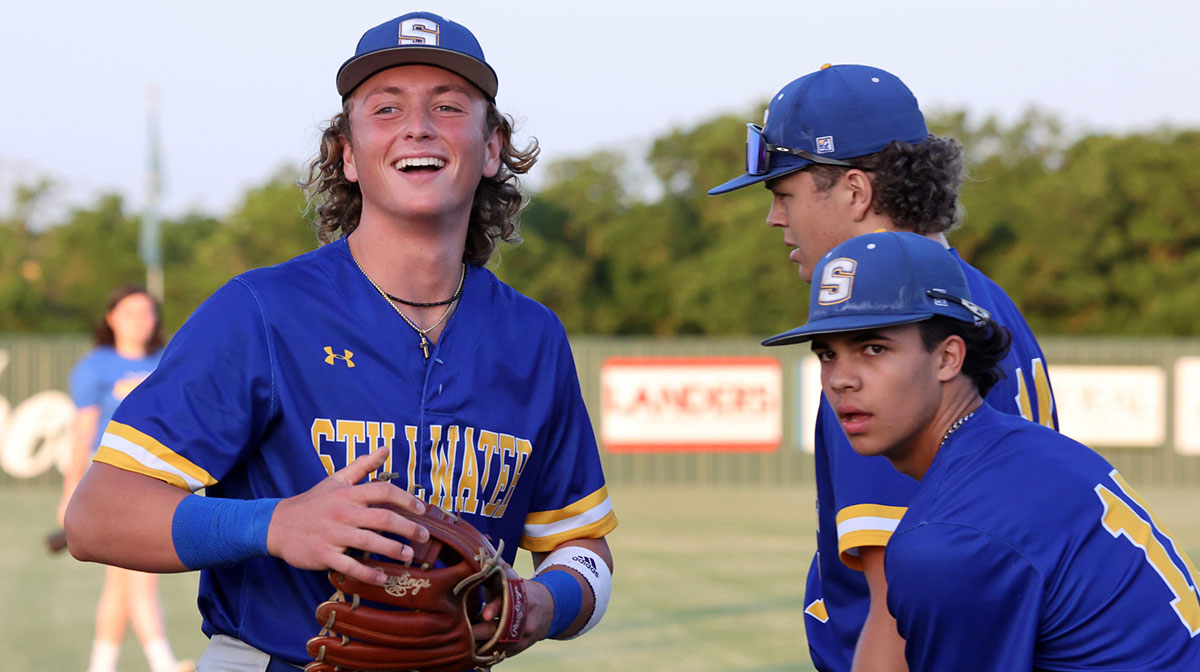Throughout the course of the 2019 MLB season, the American League and the National League proved to be two very different entities.
While the AL boasted some of the best records in baseball, the league was also extremely top-heavy. The NL, on the other hand, had far more parity from start to finish.
Numerous teams were still in the hunt for the second Wild Card spot over the course of the final two weeks, and the NL Central was not decided until the final day of the regular season.
The Los Angeles Dodgers and Atlanta Braves were pretty clearly the two best teams in the NL during the regular season, but the competitiveness of the league has been that much more evident in the playoffs.
After a pair of gut-wrenching and thrilling five-game series, the Washington Nationals and St. Louis Cardinals defeated the Dodgers and Braves, respectively, to punch their tickets to the NLCS.
The Nats' victory gave the franchise its first series win since moving from Montreal to Washington, D.C. in 2005. Meanwhile, the Cardinals are making their first NLCS appearance since 2014, when they were defeated by the San Francisco Giants.
These two National League upstarts have had their backs against the wall at numerous times in the past week-plus, but now they will square off for a chance to go to the World Series. Game 1 is on Friday at Busch Stadium in St. Louis.
Let's break it down.
How did they get here?
Cardinals
Both the Cardinals and Nationals had to stave off elimination–twice–in order to get to the NLCS.
St. Louis took Game 1 after the Braves bullpen imploded, but they lost each of the next two games as the Braves delivered clutch hits against Cardinals ace Jack Flaherty in Game 2 before scoring three runs off of Carlos Martinez in Game 3.
The Cardinals were in the driver's seat during Game 4 after Paul Goldschmidt and Marcell Ozuna clubbed back-to-back homers against Braves starter Dallas Keuchel in the bottom of the first. Although the Braves scratched out a run in the third inning, Ozuna hit his second homer of the game to give the Cardinals a 3-1 lead through four innings.
However, Cardinals starter Dakota Hudson began to fall apart in the top of the fifth. After Dansby Swanson doubled with one out and advanced to third on a passed ball, Braves super-sub Adam Duvall reached on an error, scoring Swanson and cutting the lead to one. Though Hudson got Ronald Acuna to line out for the second out of the inning, Ozzie Albies homered to give the Braves the lead.
Atlanta would have chances to add some insurance in the sixth and seventh innings, but they left the bases loaded twice as John Brebbia and Andrew Miller both escaped from a pair of jams. Still, the trio of Luke Jackson, Sean Newcomb and Josh Tomlin kept the Cardinals in check.
After Tomlin got the first out of the eighth inning, he was replaced by Shane Greene. Atlanta's marquee deadline acquisition had a rather tenuous stint with the Braves, and he was making just his second appearance of the series.
The Cardinals capitalized. Goldschmidt knocked a broken-bat double into left field. Although Greene struck out Ozuna for the second out of the inning, Yadier Molina singled off the top of Freddie Freeman's glove to bring in Goldy and tie the game at four apiece.
Atlanta wasted a leadoff double by Acuna in the ninth, and the Cardinals would win the game in the 10th after stringing together base runners against Julio Teheran. Molina hit a sacrifice fly to bring home the winning run.
What should have been an exciting Game 5 turned into a dud when the Cardinals set a Division Series record by scoring 10 runs in the first inning. The game was over before the Braves even had their turn to bat, and the Cardinals were the first team to earn a spot in the NLCS.
Nationals
The Nationals also found themselves in a 1-2 hole after the first three games.
Los Angeles and Washington had split the first two games of the series behind terrific performances from Walker Buehler and Stephen Strasburg, respectively.
The Nationals took an immediate lead in Game 3 when Juan Soto hit a two-run homer off of Dodgers lefty Hyun-Jin Ryu. Meanwhile, they were getting an excellent performance from journeyman starter Anibal Sanchez, whose lone blemish was allowing a solo homer to Max Muncy in the fifth inning.
Sanchez recorded nine strikeouts and scattered just four hits in five innings of work. Although he was only at 87 pitches, Nationals manager Dave Martinez made an early move to the bullpen, bringing in Game 1 starter Patrick Corbin.
After allowing a single to Cody Bellinger to lead off the sixth, Corbin struck out the next two Dodger hitters. But the wheels fell off shortly thereafter.
Pinch-hitter David Freese hit a single against the shift before Russell Martin doubled to give the Dodgers the lead. After a walk to Chris Taylor, pinch-hitter Enrique Hernandez doubled in two more runs, ending Corbin's night. The Dodgers were not done, however, as Justin Turner would hit a three-run homer off of Nats reliever Wander Suero to cap off a seven-run inning.
Despite the utter shock of Game 3 and another early homer from Turner off of Max Scherzer in Game 4, the Nationals fought back. Washington tied the game off of Dodgers starter Rich Hill in the third inning after Anthony Rendon's sacrifice fly, then took the lead in the fifth when Rendon singled off of Julio Urias. Just two batters later, the first draft pick in Nationals history–Ryan Zimmerman–pounded a three-run homer to give the Nats a 5-1 lead.
With Scherzer dealing, that was all they needed. “Mad Max” scattered four hits across seven innings, striking out seven and giving the Nationals a lifeline heading back to Los Angeles.
Contrary to Cardinals-Braves, Game 5 between the Nats and Dodgers was an absolute classic.
For the second straight game, the Dodgers jumped out of the gates at the plate. Joc Pederson doubled off of Strasburg before Muncy homered to stake Los Angeles to another early lead. One inning later, Hernandez launched a towering homer that just cleared the wall (and Michael A. Taylor's glove) in center.
Although Strasburg would begin to settle in, Buehler was dominating once again. Through five innings, Buehler had allowed just one hit and struck out five. The Nationals got on the board in the sixth, however, as Rendon doubled and was brought home after Juan Soto singled.
Buehler got the first two outs of the seventh inning before manager Dave Roberts brought in Clayton Kershaw to face Adam Eaton. Kershaw struck Eaton out on three pitches, but his postseason demons would soon rear their ugly heads.
Tannery Rainey and Corbin got the Nationals through the bottom of the seventh, and then the Nationals ambushed Kershaw in the eighth. Rendon homered on the second pitch of the at-bat to cut the deficit to one, and Soto followed by crushing a first-pitch fastball 450 feet into right-center field bleachers to tie the game.
Things remained even as the game went into extra innings, when Rendon would be the spark plug yet again. After Eaton drew a six-pitch walk against Joe Kelly (who also pitched a scoreless ninth), Washington's MVP candidate doubled to left field.
The Dodgers would intentionally walk Soto, but Nats second baseman Howie Kendrick stunned all of Dodger Stadium by mashing a grand slam to end years of playoff disappointments.
The starters
Cardinals
The Cardinals makeshift rotation was a bit of a mystery heading into the NLDS, but they were also the group that kept St. Louis competitive in the first three games.
Miles Mikolas threw five fantastic innings in Game 1. Right-handed ace Jack Flaherty would take the loss in Game 2 after the Cardinals offense went totally anemic against Mike Foltynewicz, but he still tossed seven quality innings. Back at Busch Stadium, Cardinals veteran Adam Wainwright posted 7 2/3 scoreless innings, only for his scintillating outing to be ruined by Martinez in the ninth.
Hudson battled just enough in Game 4, and Mikolas had another clean inning in relief once the Cardinals offense finally woke up and tied the game. Flaherty had more than enough run support in Game 5, but he pitched six dominant innings anyway.
The success of the rotation is a big development ahead of the NLCS. With the series opening in St. Louis, Mikolas will get the series opener once again before Wainwright takes the ball in Game 2. That means that Flaherty will take the mound as the series shifts to Washington, with Hudson set to follow in Game 4.
Cardinals manager Mike Shildt is playing the percentages by giving Wainwright another start at home, where he had a 2.56 ERA in 16 starts during the regular season. Should the Cardinals take both games in St. Louis, he will feel quite comfortable having Flaherty as the anchor man taking the hill with a chance to give the Redbirds a 3-0 series lead.
Hudson is the X-factor. Sure, he is not slated to start until Game 4, but in a tight series, he is going to need to produce results. Despite posting a 3.35 ERA during the regular season, Hudson has an exceptionally high walk rate, and his peripherals suggest that he has benefited from some luck. That might not be enough against a Nationals lineup that wears on you by working counts.
Nationals
When the Nationals signed Corbin in the offseason, they possessed arguably the best top three of any rotation in the league. Scherzer and Strasburg were already established aces, and now Washington had acquired a power lefty coming off the best season of his career.
Indeed, the “Big Three” thrived in the NLDS. Even though he was outdueled by Buehler in Game 1, Corbin scattered three hits and one run across six innings while striking out nine. He was pretty dominant.
Strasburg followed with his own dominant performance in Game 2, and despite the early adversity in Game 5 he managed to keep the Nationals within striking distance as they entered the late innings.
Meanwhile, Scherzer laid all doubt to rest. He had faced plenty of questions with respect to his health–Scherzer had multiple stints on the Injured List in August before a poor September–after a rough showing in the NL Wild Card game. But he totally overwhelmed Dodger hitters during his relief appearance in Game 2, and he almost single-handedly kept the Nats season alive in Game 4.
Sanchez should not be overlooked. He was superb against the Dodgers in Game 3, and he has quietly been one of the more effective free agent starters from last winter.
In fact, Sanchez will get the start for Game 1 given that both Strasburg and Corbin pitched on Wednesday while Scherzer would be starting on short rest. Alternatively, Sanchez will be on full rest, and he is coming off one of his best outings of the season.
Scherzer would be back on full rest for Game 2, and the Nationals could not ask for a better guy to pit against Wainwright on the road.
Both Strasburg and Corbin figure to start each of the next two games, although there is a chance that Martinez could utilize Corbin in relief if he sees an opportunity.
The lineups
Cardinals
St. Louis had been one of the most disappointing offenses of 2019.
With a lineup consisting of Goldschmidt, Ozuna and Matt Carpenter, the Redbirds looked like one of the more dangerous offensive groups in the league. But by the end of the season, they ranked 10th in the NL in runs scored (764) and 11th in OPS (.737). Carpenter had a massively disappointing season, and Goldschmidt produced well below his usual standards. However, the big bats got hot at just the right time.
Ozuna was an absolute crusher against the Braves, slashing .429/.478/.857 with two homers and five RBIs. For his part, Goldschmidt was the table-setter right in front of Ozuna, slashing .429/.478/.905.
Tommy Edman–who has arguably been the Cardinals best hitter over the course of the last two months–posted a .960 OPS for the series and helped to key a number of big innings.
However, the rest of the lineup was mostly disappointing.
Molina had a pair of big moments in Game 4, but he hit just .143 for the series. Leadoff hitter Dexter Fowler was even worse, slashing .091/.167/.136 and rarely giving the Cardinals a base runner at the top of the order. Kolten Wong–batting behind Fowler–was excellent in Game 4 and Game 5, but he really struggled through the first three games of the series. Paul Dejong hit .222 and struck out eight times.
Carpenter has mostly been relegated to the bench given Edman's emergence in the infield. Harrison Bader has speed and plays a solid defensive center field, but he still cannot hit.
The Cardinals are going to need more production around Goldschmidt and Ozuna. When they both get going, St. Louis can put up numbers with just about anyone. But the Cardinals need to consistently get base runners in front of those guys in order to put more pressure on opposing starters, and especially against the Nats' three-headed monster of Scherzer, Strasburg, and Corbin.
Considering that Jose Martinez is the only reliable bat off the bench, Shildt is going to have to stick with his guys. He will certainly be hoping for improvement at the top of the order, and likely will not be afraid to execute small ball to scratch across runs.
Nationals
Unlike the Cardinals, the Nationals had one of the better offenses in the NL this season. Anchored by the prolific bats of Rendon and Soto, Washington ranked second in runs scored and second in OPS.
The Nationals relied heavily on Rendon and Soto once again in the NLDS. In fact, that duo produced nearly half of the team's runs in the series. Rendon slashed .412/.455/.765, capping his excellent performance with a three-hit night in Game 5. Meanwhile, Soto slashed .278/.409/.611 and had a pair of massive homers. Soto also notched a pair of hits in Game 5.
Much like the Cardinals, however, Washington's lineup was largely uninspiring aside from their two stars.
Kendrick had the definitive hit in the series, but he made a number of mistakes on the bases and committed three errors while only hitting .250 over the course of the five games.
Leadoff man Trea Turner had a lot of success in the first couple of games as well as Game 4, but he was downright miserable in Game 3 and Game 5. He often had trouble picking up sliders and made a lot of weak contact. Eaton–who was hitting behind Turner–had a rough series. He drew five walks, but also hit just .188.
Kurt Suzuki and Yan Gomes provided almost nothing from the catching position, and an injury to Victor Robles in Game 2 forced Taylor into the lineup.
The Nationals got almost nothing at the bottom of the order, and it seemed like their success hinged on whether or not Rendon and Soto could get opportunities with runners in scoring position.
However, Zimmerman was so reliable that he earned the starting spot at first place. That move gives the Nats even more depth off the bench as they prepare for the Cardinals.
Taylor, Asdrubal Cabrera and Brian Dozier are all likely to get more chances off the bench, and they will need to produce against the Redbirds pen in the later innings.
The Nationals did not have a single stolen base attempt against the Dodgers, but expect that to change against a St. Louis staff that is slower to the plate.
The bullpens
Cardinals
The Cardinals bullpen had been one of the best in baseball all season long, but they entered the postseason after a horrendous September in which they ranked towards the bottom of the MLB in both ERA and fWAR.
However, St. Louis relievers were lights-out against the Braves in the middle innings. John Brebbia, Andrew Miller and Giovanny Gallegos pitched through a number of tight situations. Right-handed flamethrower Ryan Helsley was absolutely dominant in a pair of appearances, and left-hander Tyler Webb rebounded from a tough outing in Game 1.
The one weak spot was closer Carlos Martinez, who suffered through an atrocious series of performances. Martinez nearly blew a four-run lead in Game 1, and then he blew the save in Game 3. In 3 1/3 innings of work, Martinez gave up six runs on six hits while also walking three.
Shildt has said that he is confident in Martinez at the end of ball games. But the Cardinals can ill afford to have inconsistency against a Nationals team that led the majors in runs scored in the eighth inning or later, especially considering that they have already made a pair of comebacks in elimination games.
Another big key resides in how Shildt uses his guys in platoon matchups. He seemed to have the right answer for every key at-bat against the Braves. Can he do the same against the Nationals?
Nationals
Washington's bullpen is still the biggest question mark. The Nationals attempted to negate this issue by using both Scherzer and Corbin in relief, but they also rely on those guys to go deep into the games that they start.
The one sure bet has been closer Daniel Hudson, who replaced Sean Doolittle as the closer at the end of September and pitched 3 2/3 scoreless innings against the Dodgers. In fact, Hudson has not allowed a run in his last 13 2/3 innings, dating back to Sept. 11.
After poor showings in September, both Doolittle and Fernando Rodney had some quality appearances. However, in both cases, those were low-stress innings where the game was pretty well in hand.
The Nationals are going to need more from both Wander Suero and Rainey, two guys that have plenty of velocity and movement but can struggle with their command.
Like Shildt in the other dugout, Martinez is going to have plenty of decisions to make with respect to late-game matchups and platoon situations. Will he use his starters are relievers once again? It is certainly possible, but the Nationals will likely need more usage from their regular relievers. That could be the wild card in this series.
The skinny
Each of these teams took out the presumed favorites in the National League. The Nationals were all but dead in the water in May, and the Cardinals were a .500 club at the All-Star break. Yet, here they are, getting ready to play for the pennant.
The bottom line is, anything can happen now.
However, the Cardinals seem to be at a bit of a disadvantage, especially from an offensive standpoint. Sure, Goldschmidt and Ozuna are hot, but the Redbirds were mostly held in check for the first four games of the NLDS even though they were facing–for all intents and purposes–a fairly average pitching staff.
Meanwhile, Washington's struggles at the dish can be explained in part by the fact that they were facing a pitching staff that ranked first in the NL in ERA.
Rendon and Soto are going to be a tall order for the Cardinals to deal with, and they will be facing an elite group of starters that are at the top of their game.
The Cardinals bullpen will give them a chance if they can pitch as effectively as they did against the Braves. But they lack the same offensive potency and starting depth possessed by the Nationals.
Washington has already broken their postseason “curse,” and they have consistently held up as one of the most resilient teams in baseball. The Nationals march on to the World Series.
Prediction: Nationals in 6

